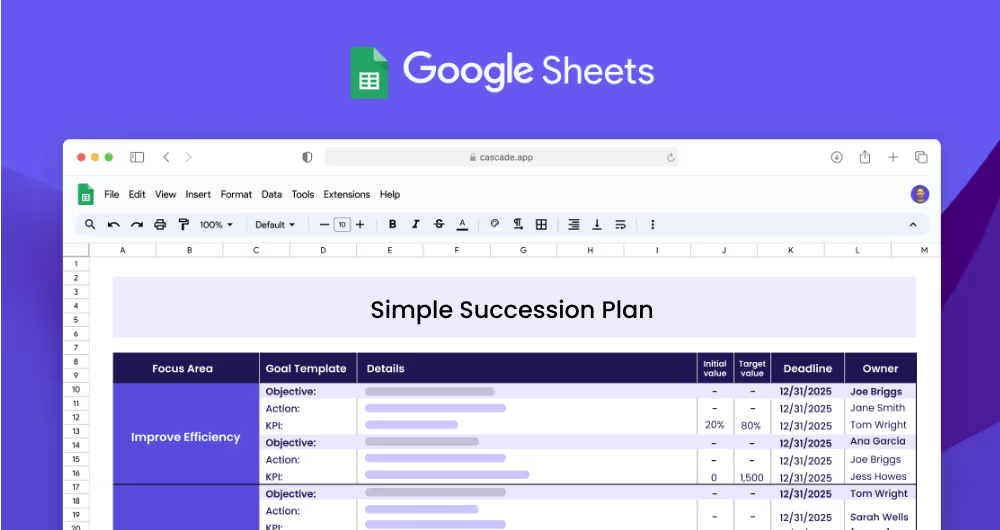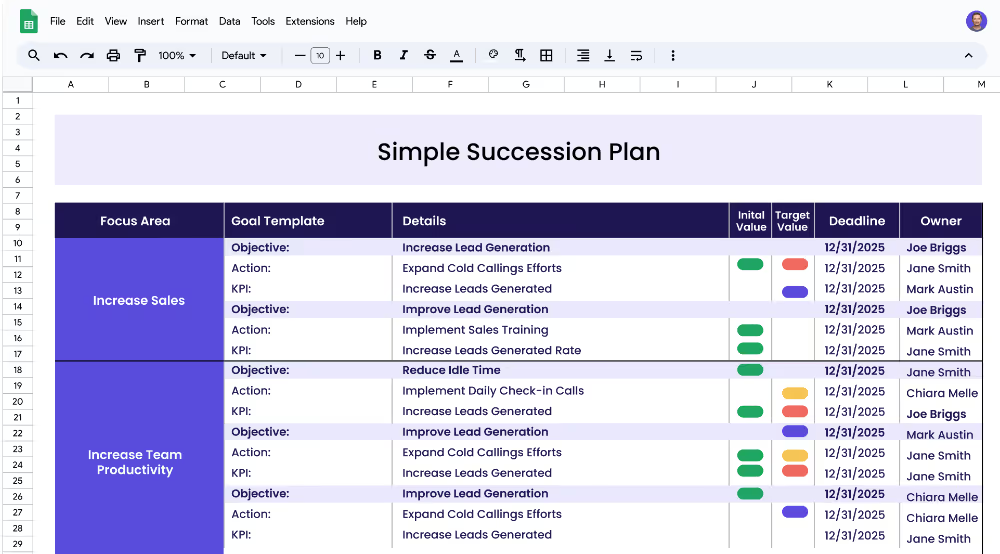A simple succession plan is a structured approach to leadership transition and planning for the future of your business. It provides a framework for ensuring the longevity and continued success of your organization. The plan can include objectives, measurable targets (known as KPIs), and related projects (or actions) in order to achieve the desired results. The goal is to ensure the continuity of your business and to be able to transfer leadership roles in the most efficient and effective way possible.
Each focus area has its own objectives, projects, and KPIs to ensure that the strategy is comprehensive and effective.
The Simple Succession Plan template is perfect for business owners, leaders, and managers who need to create a succession plan. It is designed to provide a structured approach to leadership transition and planning for the future of your business. The template is easy to use and can help you develop a plan that is tailored to your business's specific needs and objectives.
When creating a simple succession plan, it is important to first define your focus areas. These should be the main topics or areas of focus that you want to address in the plan. Examples of focus areas could include succession planning, business continuity, financial management, organizational development, and more. Once you have identified the focus areas, you can begin to think about the objectives that could fall under that focus area.
Objectives are the goals that you want to achieve within each focus area. They should be specific, measurable, attainable, relevant, and time-bound. Examples of objectives could include developing a leadership team, creating a leadership transition plan, developing a backup plan, and creating a business continuity plan.
KPIs, or key performance indicators, are specific and measurable goals that you set in order to track progress and measure success. Examples of KPIs could include increasing the number of leadership team members, increasing leadership transition efficiency, increasing backup plan efficiency, and increasing business continuity plan efficiency.
Once you have identified the KPIs, you can then develop projects (or actions) that will help you achieve the desired results. These projects should be designed to help you reach the desired KPIs. Examples of projects could include recruitment of leadership team members, creating a leadership transition plan, developing a backup plan, and creating a business continuity plan.
Leverage the power of Cascade Strategy Execution Software to propel the success of your strategy. Shed the limitations of spreadsheets and adopt a tool that improves collaboration, adapts to changes swiftly, and provides comprehensive insights through dynamic dashboards. Cascade is built to foster alignment and enhance the execution of strategic plans organization-wide. Sign-up for free or book a demo with one of our strategy experts, and experience a quantum leap in strategic execution.


